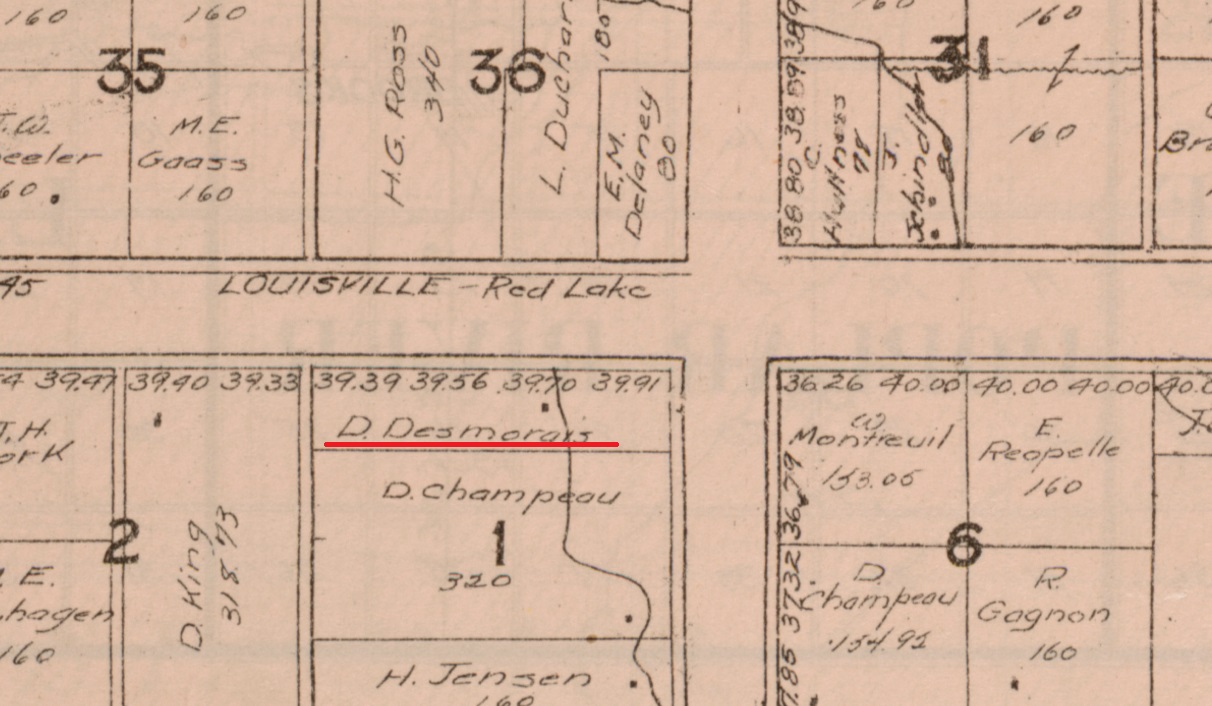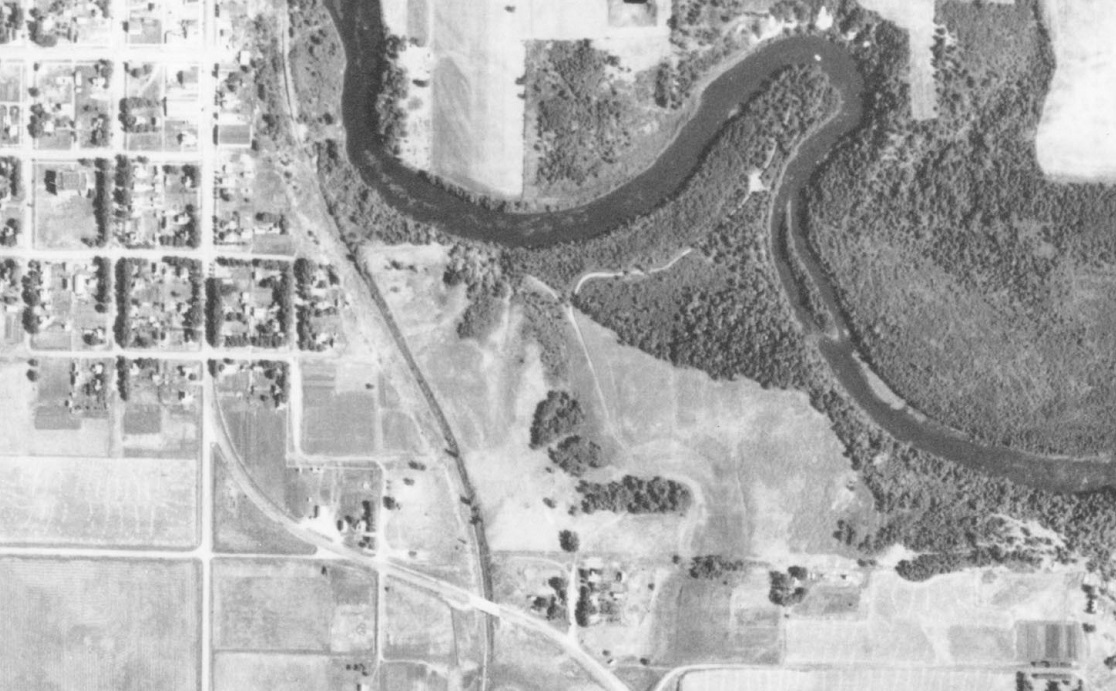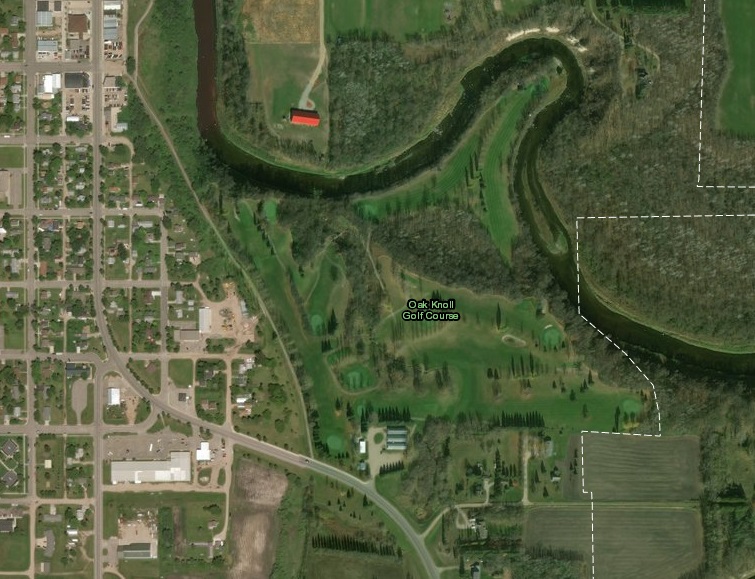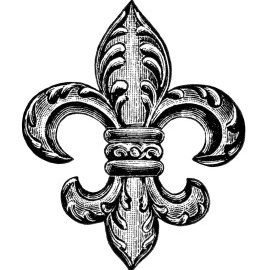Is there a city in Minnesota with a more distinct French accent than Red Lake Falls?
Maybe, but pour l’amour de Dieu (for goodness’ sake), this place is something.
Allow me, then, to translate the title of this post. It reads, “Red Lake Falls GC (or Chutes du Lac Rouge GC, if you want that part in French): I believe I have found it.”
Why the bilingual mumbo-jumbo? It’s intended to be a tribute to the French heritage emanating from Red Lake Falls, a city of 1,400 in Red Lake County, 35 miles east of Grand Forks, N.D.
Red Lake Falls’ French roots run deeper than the roots laid down by the oaks spreading along the banks of the two rivers, Red Lake and Clearwater, that wind through the area. Red Lake Falls has a Champagne Avenue and a Langevin Avenue and a Bottineau Avenue. (Even the word “avenue” is of French origin.) All that’s missing is an Arc de Triomphe replica at the intersection of International and Champagne avenues. (No, I’m not suggesting one.)
The local campground in Red Lake Falls is named Voyageur’s View. The motel on Minnesota Highway 32 is the Chateau. They serve French fries (yeah, cheap joke) at Joe DiMaggio’s, the restaurant on the south side of town — though I have to nitpick here. If you were going to name a Red Lake Falls sports bar after a baseball Hall of Famer, why not Napoleon Lajoie, “The Frenchman,” 1896-1916, .338 career batting average?
Red Lake Falls’ founding speaks to its roots. In 1798, French Canadian trader Jean Baptiste Cadotte established a trading post at what is now Sportsman Park. The city’s better-known pioneer was a French-American named Pierre Bottineau. In 1876, he led a group of French-Americans northwest from Ramsey and Hennepin counties; they homesteaded the area and were joined two years later by a colony of French settlers from Upper Canada.
Today, much of the French heritage remains. Plat maps and telephone directories are chock-full of names of French origin. Red Lake Falls couldn’t be more French-connected if its high school were named Lafayette.
Which, of course, it is.
All of which has nothing to do with golf, unless one were to point out that there are scholars of the game who posit that a form of the “Scottish game” was played in, yes, France, Belgium and the Netherlands as early as the 15th century. But there is a connection, if only tangential, between golf in Red Lake Falls and the land of croissants and Bordeaux.
The city’s long-established golf course is Oak Knolls, a nine-hole layout along the Clearwater River on the west southeast side of town. Most web sites that include courses’ dates of founding list 1940 for Oak Knolls. That is true, but only in a kinda-sorta-not-the-whole-story way.
The Red Lake Falls Gazette of April 11, 1940, suggested golf had already been played in Red Lake Falls, reporting that the city’s golf club was about to be reorganized. The next week’s paper confirmed it. “Pierre Bottineau Golf Club Is Re-Organized,” the headline read. The golf course, it turned out, had “reverted back to nature” in recent years but was about to be revived on the same site — the one on the Clearwater River, same as its present-day site.
But in fact, golf on the Clearwater site predated 1940. And golf in Red Lake Falls went back even further.
Take it from a Minneapolis Tribune story of April 24, 1932. “The golf course at the new Red Lake Falls park has been reseeded and will be ready for play early in June, according to President Guy F. Hennings,” the Tribune reported. “More than 400 pounds of seed, mixture of blue grass and red top and clover, was spread over the entire six-hole course. The old course at the Phil Demarais farm will be used until the new one is fit for play.”
Demarais. Another classic name of French origin. And there’s your lost golf course. On the Phil Demarais farm. Wherever that was.
Time to put on my thinking beret and find the lost course.
PHIL’S FARM
Sometimes, pinpointing the site of a lost course takes less time than it takes to play a round of mini-golf. The lost course might be described in detail in an old newspaper story, or the first person you call happens to remember the eagle he made on the par-5 eighth in 1942 (“drove it past the silo on the right, grabbed my cleek, lofted it over the herd of sheep on the left, knocked in a 40-footer with my trusty MacGregor”).
And sometimes, Phil Demarais.
Tracking down the Demarais farm/lost golf course was not easy. Circling the area via an old aerial photo revealed nothing. An initial look at old plat maps, ditto — except for a 1950s map that showed property owned by a “Demaras” and coincidentally situated directly across the Clearwater from the Oak Knolls golf course. That, too, proved to be a dead end. Telephone calls to the Red Lake Falls area produced either “that number has been disconnected” or, when answered, puzzlement about any possible abandoned golf course or Phil Demarais — though a woman who had been born a Demarais offered a pronunciation of the name in those parts (DEM-uh-ruh) and suggested one might look near Terrebonne (“good earth” in French), a township and former town site southeast of Red Lake Falls. There was nothing in Terrebonne plat maps, though, except more French names that weren’t Demarais: Cadieux, Sauve, Laframboise and dozens of others.
Nothing showed promise until a relatively deep search for Phil Demarais background on the Internet. Finally — please excuse moi for two more Francophone references — voila!
Mr. Demarais was quite the notable character.
Phillip Demarais, born in 1874 in Weedon, Quebec, was the son of Red Lake County pioneer John Baptiste Desmarais I, according to an entry in the geneaology web site RootsWeb, citing an entry in “A History of Red Lake County.” (Other web sites also note different spellings of the surname; it seems possible Phillip dropped the first “s.”) He lived and farmed in Pleasant Lake Township, the web site entry read.
“Phillip loved to dance and would often call the squares at the neighborhood dances. He played the mouth harp and could even bang a good rhythm on a common dish pan.”
RootsWeb also cited a Red Lake Falls Gazette story, date not mentioned, that asserted Demarais devised an improvement for a thresher part that was patented by a Minneapolis “expert” with no credit or profit to Demarais.
“Phillip also played hard during his lifetime,” the Gazette story continued, “and had a very good singing voice. After a few drinks of Blue Ribbon Whiskey he could be quite an entertainer. …
“He was known in the area as a man who was always there when someone needed help, especially around butchering time because he could make salt pork better than anyone.”
All that aside, I still wanted most to find out where his farm was, and where the lost golf course lay.
The notation that Demarais’ farm was in Pleasant Lake Township (more commonly referred to as Lake Pleasant Township) sent me back to the Red Lake County plat maps. And there it was. Maps from 1911 and 1916 both show plots owned by either/and/or “Philip Desmarais,” Delina Desmarais (Phillip’s first wife) and D. Desmarais at the very northeastern corner of Lake Pleasant Township, 3.2 miles southeast of downtown Red Lake Falls and adjacent to Terrebonne Township on the west. In current terms, the farm was at the southwest corner of the intersection of county roads 114 and 115.
Oui, je crois je l’ai trouvé.

The Demarais course likely was the first one in Red Lake Falls. A Gazette story from May 1, 1930, reported that the city’s golfers were organizing and planned to build a course on the Demarais farm. Beyond that, I know little about the course — number of holes, length of course, etc. The Demarais plot was mostly flat, sharply rectangular, and bisected by Lower Badger Creek. I later learned from John Thibert, president of the Red Lake County Historical Society, that such a layout was a French staple — they typically would divide sections of land in rectangular fashion so as to afford as many residents as possible access to a waterway and with a house nearby.
By now, you shouldn’t be surprised by some of the names of the folks who owned land near the Demarais farm: Ducharme, Champeau, Quesnell, Gagnon, Robillard, Latendress … you get the idea.
The golf course on the Demarais plot was abandoned in 1932, according to the aforementioned Minneapolis Tribune story. Demarais sold the farm in 1936, according to the Gazette story, “semi-retired,” and bought and operated a grocery store in nearby Brooks before selling again and moving to Terrebonne, near one of his favorite fishing holes. When he died in 1952 of tuberculosis in Thief River Falls, he was, according to one Internet entry, the last surviving pioneer settler in Red Lake County.
Golf in Red Lake Falls lived on after moving off the Demarais property and onto the current Oak Knolls site. In April 1932, committees were chosen for the six-hole Red Lake Falls Golf Club, with Otto F. Hennings as president and memberships costing $10. M.E. Jones, an engineer with the state highway department, presented a sketch of the golf course. Three additional holes along the bend of the Clearwater River were not to be put into play until 1933.
It took until mid-1932 for the course to be playable. The Gazette reported on July 28 that the course at Bottineau park was now open, employing six sand greens and supported by 33 members.
“Some of the local golfers who have played the course and have lost a goodly number of balls complain the course is too sporty,” the newspaper reported. “Others who make the rounds and return with more golf balls than when they started say it isn’t sporty enough. The truth probably lies between those two extremes and the bulk of the players say it is going to be just right.”
Though I did not scour every issue of the Gazette through the rest of the 1930s, what I did scan revealed no more signs of golf in Red Lake Falls until April 1940, with the mention of the club, now named Pierre Bottineau, having reorganized after the previous period of inactivity.
The course’s name at some point was changed from Bottineau to Oak Knolls, and it exists today as a nine-holer with grass greens. “You will be challenged to keep your ball dry as a small stream, the pond, or the river entices your ball to take a dip,” reads a passage on redlakefallsgolf.com.
Carry on, Red Lake Falls golfers. Au revoir, Monsieur Demarais.


